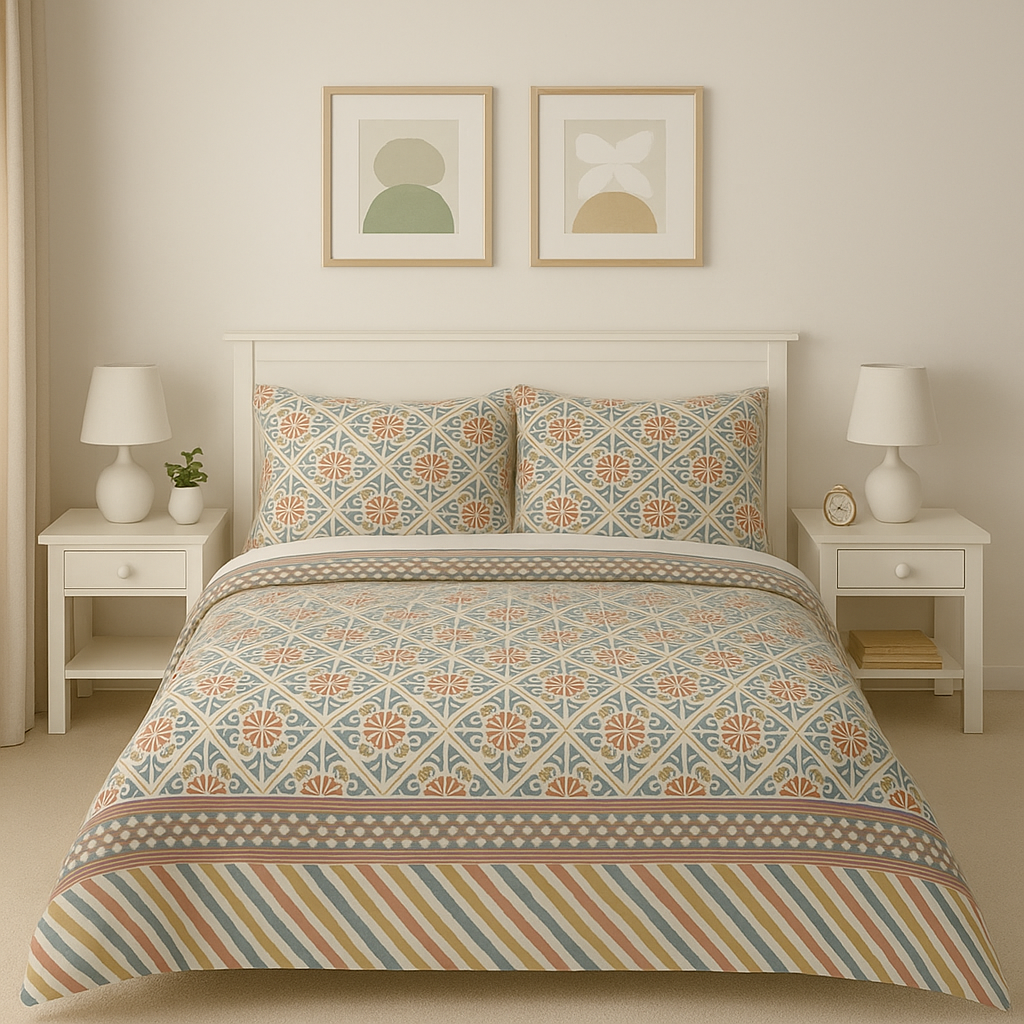
Eco-Friendly Bedsheets: Sustainable Choices for a Greener Home
Share
We spend nearly a third of our lives in bed, so the fabrics we sleep on matter. More than ever, homeowners are switching to eco-friendly bedsheets not just for comfort, but also to support a healthier planet. Choosing sustainable bedsheets means reducing your environmental footprint while enjoying high-quality, long-lasting comfort.
From organic cotton bedsheets to innovative bamboo and hemp fabrics, eco bedding has become a stylish and responsible choice for every green home. Let’s explore how you can make the switch.
What Makes a Bedsheet Eco-Friendly?
Sustainable Fabrics
Eco-friendly bedsheets are made from materials grown without harmful chemicals or pesticides. These fabrics are renewable, biodegradable, and less resource-intensive.
Ethical Production
True eco bedding goes beyond fabric—it involves fair labor practices and ethical supply chains.
Low-Impact Packaging
Reusable or compostable packaging further reduces waste.
Top Eco-Friendly Bedsheet Fabrics
Organic Cotton Bedsheets
Grown without synthetic pesticides, organic cotton is softer, safer, and kinder to the environment. It’s one of the most popular eco bedding materials.
Bamboo Bedsheets
Naturally hypoallergenic and moisture-wicking, bamboo bedsheets are a favorite for hot sleepers. Bamboo also grows quickly without excessive water.
Hemp Bedsheets
Hemp is durable, antibacterial, and requires little water to grow. It softens with each wash, making it a great eco choice.
Linen Bedsheets
Made from flax, linen is breathable, long-lasting, and biodegradable. Its natural texture gives a chic, rustic feel.
Benefits of Eco Bedding
Better for Your Health
No harsh chemicals means fewer skin irritations and allergies.
Better for the Environment
Eco bedding reduces pollution, water waste, and reliance on plastics.
Long-Lasting Durability
Sustainable fabrics often outlast synthetic blends, giving you more value for money.
Sustainable Bedsheet Certifications to Look For
GOTS (Global Organic Textile Standard)
Ensures cotton is grown organically and processed responsibly.
OEKO-TEX Standard 100
Certifies that fabrics are tested for harmful substances.
Fair Trade Certification
Guarantees fair wages and ethical labor practices.
Styling a Green Bedroom with Eco Bedding
Neutral and Earthy Colors
Shades like beige, cream, and sage green enhance the eco look.
Minimalist and Natural Decor
Pair your sustainable bedsheets with wooden furniture, indoor plants, and woven rugs for a calming, eco-inspired space.
How to Care for Sustainable Bedsheets
Washing Tips
- Use cold or warm water to reduce energy use.
- Wash with natural, eco-friendly detergents.
Eco-Friendly Drying Methods
- Line-dry in fresh air whenever possible.
- If using a dryer, choose low heat.
Storage Tips
Keep bedsheets in breathable cotton bags rather than plastic containers.
Common Myths About Eco-Friendly Bedsheets
-
Myth: Eco bedding is rough and uncomfortable.
Truth: Organic cotton, linen, and bamboo are incredibly soft and get better with time. -
Myth: Sustainable bedsheets are too expensive.
Truth: They last longer, making them more cost-effective. -
Myth: Eco fabrics are hard to maintain.
Truth: With simple care, they’re just as easy as conventional sheets.
FAQs About Eco Bedding
Q1: Are organic cotton bedsheets worth it?
Yes—they’re softer, safer, and better for the planet.
Q2: Do bamboo sheets really stay cool?
Yes, bamboo naturally regulates temperature and wicks away moisture.
Q3: How long do sustainable bedsheets last?
With proper care, 5–7 years or longer.
Q4: Are eco-friendly bedsheets safe for sensitive skin?
Absolutely—they’re hypoallergenic and chemical-free.
Q5: Do hemp sheets feel rough?
They start firm but soften significantly after a few washes.
Q6: Can eco bedding look stylish?
Yes! Eco-friendly doesn’t mean boring—many brands offer trendy designs and colors.
